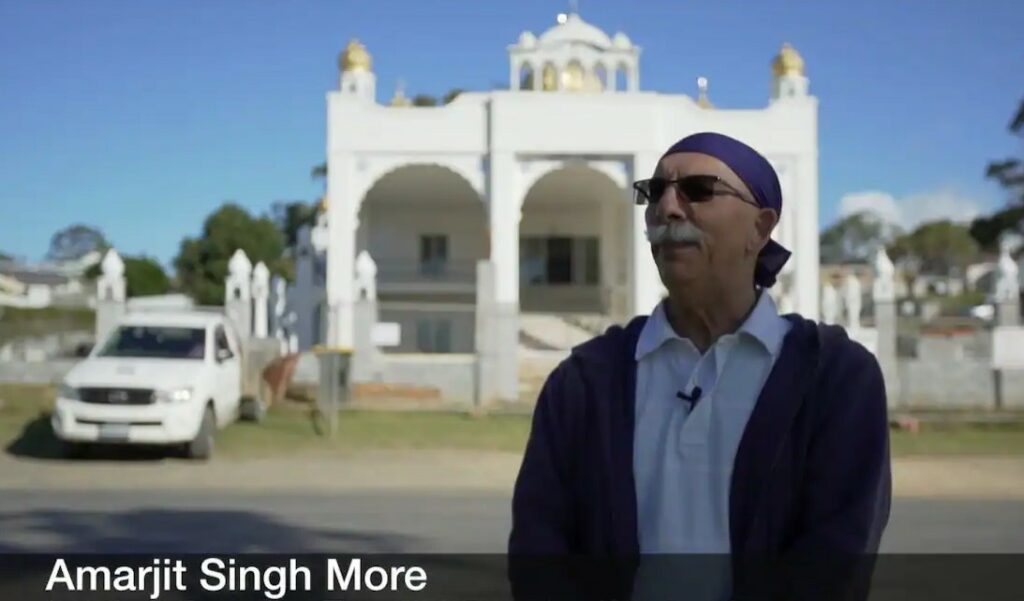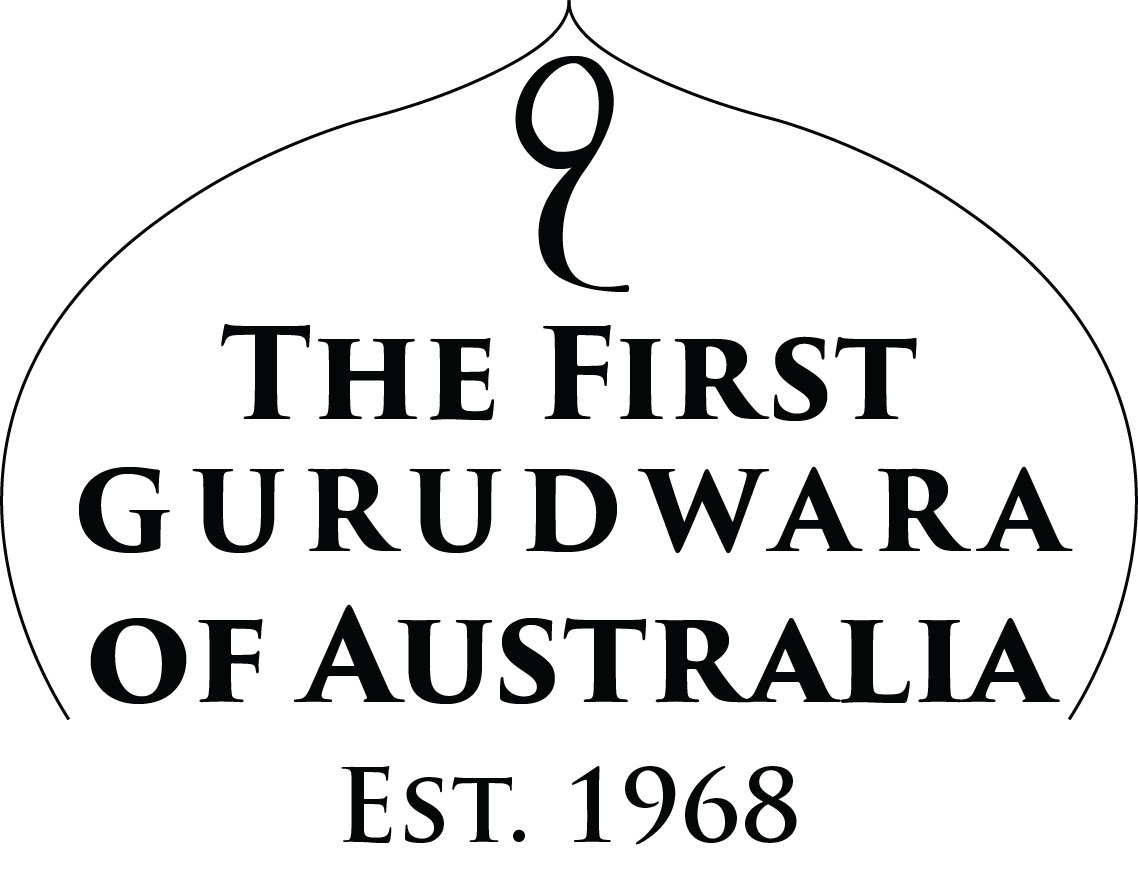The Gumbayngirr people are the original people of the Woolgoolga area. The Gumbayngirr Nation covers a large area of the mid-north coast of NSW, stretching from the Nambucca River to the Clarence River and inland to the Northern Tablelands. The landscapes and environment of this nation hold strong significance for the local Aboriginal community of today, their ancestors of the past and the Gumbayngirr people of the future.
European expansion into the north coast region began in the mid-19th century and the 25,000-acre ‘Weelgoolga Station’ was established in 1874, before the Woolgoolga township was formally surveyed in 1886. It was during this period that a new wave of migrants from the Punjab region of northern India, and of the Sikh faith, were arriving in Australia, settling beyond the new town in northern NSW and Queensland.
Regarded for their bravery, strength and adaptability, Punjabi men were often recruited into the British army and their experiences travelling abroad led to new working opportunities through international migration. However, settlement in Australia and other countries was not the intention of these early migrants. The goal, rather, was to make economic gains which, in turn, could improve the lives and elevate the social status of the migrant’s family at home in the Punjab through the purchase of land and better housing. A family’s honour, their ‘izzat’, was of great importance and the family, rather than the individual, decided that the working men would seize economic opportunities available abroad through migration. International migration was regarded as temporary, however, and the men had every intention to return home to their families in the Punjab.

As members of a British colony, and valued soldiers of the British army, Indian men were able to migrate to Australia without great difficulty. While the White Australia policies of the Immigration Restriction Act 1901 focussed on non-European migration to Australia (particularly focussing on Asia), often the strict entrance measures were relaxed or selectively applied for Indian migrants to ensure the important strategic relationship between Australia and Britain was not adversely impacted.
Upon arriving in Australia, however, migrants quickly found the living and working conditions to be harsh and unrelenting. Although the Punjabi migrants were hard working, loyal and strong of character, obtaining consistent work was difficult and often only poorly paid, temporary work was offered. Living in primitive conditions, without regular work and bearing the brunt of racist hostility and resentment, the men could not send for their families and loved ones but, rather, relied on each other and developed a strong and supportive social network to sustain them.
As a Sikh community began to develop, based on new and existing relationships, arriving migrants would follow and establish themselves amongst familiar people where a common language and culture provided warmth and comfort in an often hostile environment. A chain migration ensued whereby the existing network could support new migrants and reduce the risk and uncertainty of settlement and, in turn, new arrivals could bring strength and encouragement to the earlier migrants. Together, the growing community adjusted to change, overcame feelings of vulnerability, social isolation and prejudice and achieved greater economic success and social stability as a group. Working collectively also fostered a strong sense of independence and capability but also a feeling of belonging in Australia, which led later to permanent settlement.
The Second World War and the Partition of British India into India and Pakistan in 1947 also impacted the experience of Sikh migrants in Australia and bought about a generational change of thinking which favoured permanent settlement abroad. With a shortage of labour, Sikh workers were openly welcomed in Australia and offered regular employment and improved working conditions. Working-age sons were soon bought to NSW and, with a regular income to provide for the family, women and children followed.
As the Sikh community of northern NSW grew in strength and influence, successful relationships were also formed with Australian businessmen that led to new ventures and opportunities. It was because of these relationships that the opportunity to work on banana plantations in Woolgoolga arose in the 1940s and the Sikh community had the confidence and assurance to travel south in pursuit of social and economic success. Offering year-round work and a reliable income, banana plantations required little investment at the offset as land plots were modest and specific equipment or skill was not needed beyond the manual labour provided by the workers. Unlike anywhere else in Australia, the banana plantations gave the Sikh community the unique and valuable opportunity to buy or lease land and to permanently establish the position of a family within Australian society.
Although faith is central to the life of Sikh people, practicing orthodox worship was difficult for the early migrants due to their makeshift living conditions and the lack of a formal gurdwara (temple) in which to practice. Often religious practices were undertaken in homes or at work and this continued after the community became permanently established in Woolgoolga. However, as the community grew in strength and solidarity, it sought to build a formal and permanent place for Sikh worship for its community.
A committee of Sikh and Australian members was formed in 1965 to progress the establishment of a gurdwara and to gather donations for its construction. There was a subsequent split within the community about decisions being made for the new gurdwara but planning continued, relatively uninterrupted. Land was purchased at Hastings Street Woolgoolga by three members of the committee in 1967 and construction commenced in July the same year. Australia’s first Sikh temple was designed to be Australian vernacular in style, an open plan, brick and tile building that emulated the modest architectural style of the region. The adjacent langar (kitchen/dining hall) was also built of the same style and materials.
With the installation of the Guru Granth Sahib within the gurdwara, to be read by a female granthi trained in reading the sacred script, and the raising of the flagpole and Nishan Sahib (flag) at its entrance, The First Sikh Temple was opened for worship in June 1968 as the first of its kind in Australia. The split in the committee led to the construction of the second gurdwara, the Guru Nanak Temple in River Street Woolgoolga, in 1970 (reconstructed in 1994).
The First Sikh Temple has long been the social and religious heartbeat of the Sikh community in Woolgoolga, used as a centre for worship, ceremony, social and organisational gatherings, participation, and language, music and scripture classes for the Sikh and for the wider Australian community.
A thriving community with a rich history in India and Australia, the Sikh community opened its new community-funded gurdwara adjacent to The First Sikh Temple in 2019. Celebrating the traditional Sikh architectural style, the new gurdwara and langar serves the needs of the contemporary community but, located together, the temples reflect the important evolution of the Sikh community in Woolgoolga, demonstrating their beginnings, their growth and their pride in the Sikh culture.
THE SIKH FAITH
Sikh history began in 1469, upon the birth of Guru Nanak in a Punjabi village. Guru Nanak was the first guru who spent his life creating the foundations of the Sikh faith which renounced the hierarchical structures of other religions, preaching a religion of devotion, truthful living, social justice and inclusivity of all people, regardless of caste, race or creed.
The faith passed through ten gurus and the principles and teachings of the faith were dictated into a 1430-page authoritative scripture in 1603-04 by the fifth guru, Guru Arjan. Upon the death of the tenth guru, Guru Gobind Singh, in 1708, it was declared that no further living gurus would be appointed but that the scripture would be spoken through the authoritative and sacred text, the Guru Granth Sahib.
Today, the Guru Granth Sahib remains unchanged since its writing by the guru and copies can be found in all gurdwaras of the world and printed editions in family homes. The Guru Granth Sahib is a revered text, treated with the utmost respect and care. It is treated not as a volume of the words of God but rather as a guru itself.
For the Sikh faith, there are three methods of religious practice – daily recitation of passages from the Guru Granth Sahib; family gathering to read the scripture; and gathering at the gurdwara. When entering the gurdwara with head covered and feet bare, the Sikh will prostrate themselves before the raised Guru Granth Sahib and make an offering. Worship then includes listening to the scripture being read by a trained granthi and singing to hymns. At times of celebration, an unbroken reading of the sacred text is instituted as a display of devotion to the faith. This continuous reading by a number of trained granthi will last for 48 hours.
Following worship, the community gather in the langar to share food. Symbolising the rejection of social and class differences, the Sikh community serve vegetarian food, free of charge and without privilege or discrimination, to people of all castes, races and creeds.
